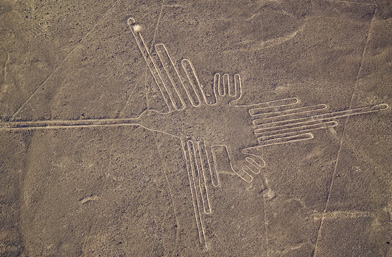Lesson 8
1. Lesson 8
Module 2: Logic and Geometry
Lesson 8: Using the Properties of Angles Formed by Parallel Lines to Solve Problems
Focus

iStockphoto/Thinkstock
Did You Know?
The geoglyphs of Nazca were scratched on the surface of the ground between 500 BCE and CE 500. They cover an area of about 450 km2. The geoglyphs depict animals, plants, imaginary beings, and geometric figures that are several kilometres long.
Parallel lines and other geometric shapes are featured in many ancient and modern designs. These shapes may exist on their own or be part of a larger pattern. The designs rely on the lines being parallel in order to have a successful, aesthetically pleasing final product. Determining how the parallel lines can be constructed is an important component of the design process.
An understanding of geometry including angle properties and parallel lines is very useful when creating or examining geometric designs. For example, precise theoretical and working knowledge of geometry was needed to build the Nazca lines in Peru. These huge geometrical designs can only be viewed from the air. The designs would have been impossible to create without an understanding of geometry and careful prior planning.
—Emory Dean Keoke, Kay Marie Porterfield. Encyclopedia of American Indian Contributions to the World. (Facts on File, 2001.) pp. 118-119.
Archaeologists require an understanding of how parallel lines can be constructed to solve problems involving the creation of ancient designs. Being able to tell whether the lines in the design are parallel or non-parallel can also provide useful information on their potential function.
This lesson will help you answer the following inquiry questions:
- How can different strategies be applied to construct parallel lines?
- How can the properties of angles formed by parallel lines and a transversal be used to solve problems?
Assessment
- Try This 2
- Lesson 8 Assignment
All assessment items you encounter need to be placed in your course folder.
Save a copy of the Lesson 8 Assignment to your course folder. You will receive more information about how to complete the assignment later in this lesson.
Materials and Equipment
